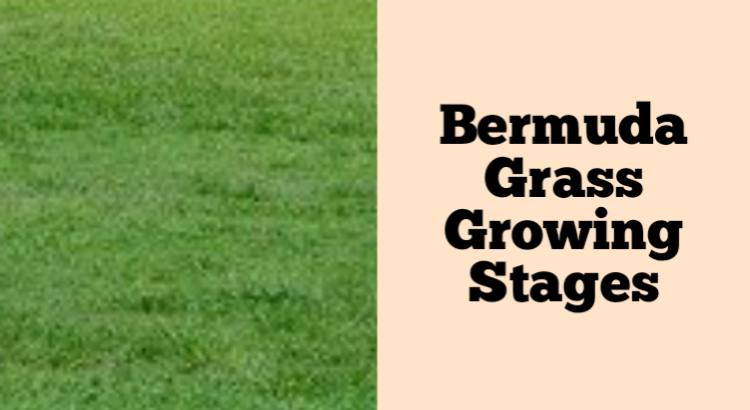Bermuda grass (Cynodon dactylon) is an excellent choice for warm-season lawns in the United States. It has a wide adaptation range, requires little maintenance, and has few pests or diseases.
Bermuda grass is also hardy, durable, and drought-tolerant. If you want to grow Bermuda grass from seed, it’s important to know which stages of growth are critical to its survival.
Bermuda Grass Growing Stages
Stage 1. Seed Germination
After the seeds germinate, root development begins. Root growth is essential for the survival of many plants, and it has developed as a response to the need for plants to acquire water and nutrients from the soil.
The type and length of roots depend on the species of plant, soil conditions such as moisture level and temperature, and seed quality.
Stage 2. Seedlings
Bermudagrass seedlings respond well to warm soil temperatures, but the germination rate is low.
The best results are obtained by planting in spring when temperatures are warm (60°F) and soils are moist.
Seedlings grow slowly during their first year of establishment; drought will cause serious injury to young plants.
The seedling roots are weak and susceptible to drought; therefore, a dense turf sod should be established before planting bermudagrass seed on a new site or under stress conditions such as closely mown turfgrass stands or poor drainage areas with excess thatch accumulation.
Once established, the rhizomatous nature of Bermuda grass allows it to spread rapidly by stolons and rhizomes into surrounding areas via root fragments which sprout new shoots at nodes or joints every few inches along their length.
Stage 3. Rhizome branching
Rhizome branching is an important stage for Bermuda grass growth. This is where rhizomes grow above ground and form new shoots, which will become the plant’s stolons.
Rhizome branching occurs in spring, usually between February and May depending on your location.
After rhizome branching has taken place, you’ll see fresh green buds developing along the tops of each rhizome.
These are called tillers and will slowly grow into new leaves over time.
Stage 4. Inflorescence emergence and flowering
Inflorescence emergence and flowering occur during the spring. Flowering is triggered by light and temperature.
Flowering occurs in response to a certain number of hours of light per day, called photoperiodism.
In other words, if you are trying to grow Bermudagrass in an area where it does not get enough sunlight, your plants may not flower for years.
Stage 5. Summer dormancy
As summer wanes, the rhizomes of Bermuda grass become dormant. The rhizomes (underground stems) and stems die back; the latter will regrow in spring, but the former will remain underground until conditions are favorable for growth again.
In order to prevent Bermuda grass from being dormant in summer, give them enough water to keep them growing.
Stage 6. Turf establishment
Turf establishment is the process of creating a healthy, dense turfgrass stand. It is a good phase of the bermuda grass growing stages. Turf establishment is the first step in establishing a lawn.
Conclusion: Bermuda Grass Growing Stages
Bermuda grass is a popular choice for lawns. It has an extensive history of use and can be found in many parts of the world.
The seedlings of this plant are used to make hay and feedstock for livestock, while its flowers are also eaten by some animals such as deer or rabbits.
It’s best not to eat fresh plants harvested from your garden because they may contain pesticides used on other plants nearby.


